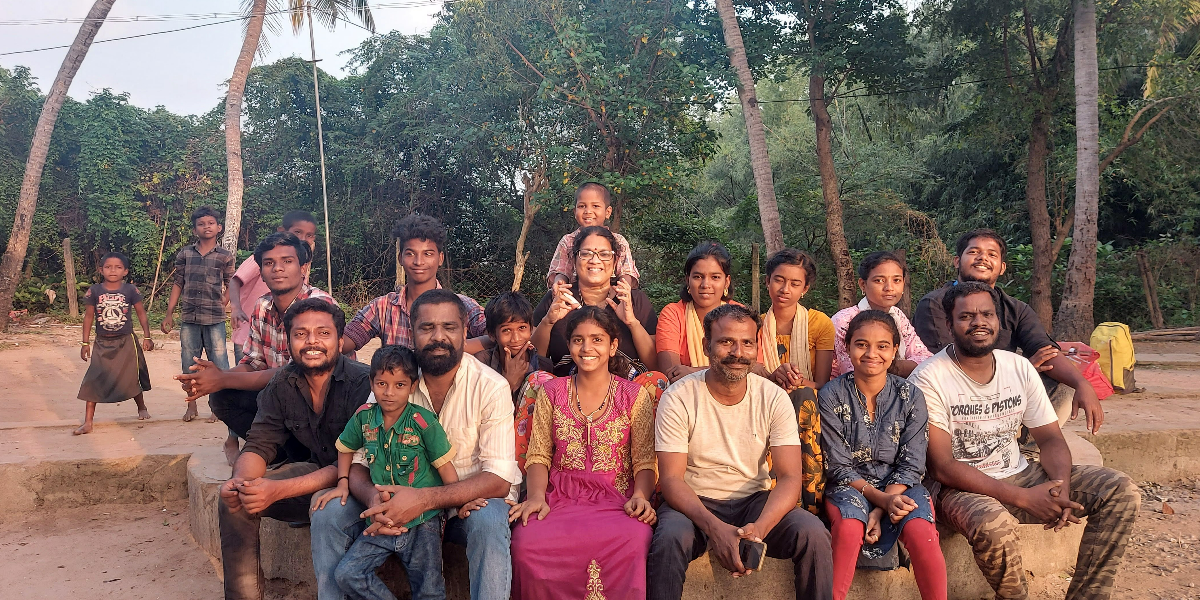Vanavil Trust and Indian Foundation for the Arts organise "Nomad Art Show" featuring pieces by child artists belonging to Tamil Nadu’s oldest nomadic tribes
Published Jun 30, 2023 | 8:00 AM ⚊ Updated Jul 02, 2023 | 10:36 AM

The child artists participating in the Nomad Art Show with their mentors. (Supplied)
What does it mean to be a nomad? Does it entail a life free from the shackles of societal norms and expectations? Does it equate to self-discovery, adventure, and the pursuit of an unconventional existence?
Popular media and social media have tried to glamourise the nomad as a concept for the urban dweller, who sees it as the ultimate escape route.
However, for many communities like the Boom Boom Mattukaran and the Narikuravar in Tamil Nadu, it has been a way of life for centuries.
Here’s another question for you. Is there any better way to understand the different facets of a community’s life than through their art?
Vanavil Trust and India Foundation for the Arts are organising the “Nomad Art Show” for three days from 30 June, 10 am to 5 pm, at the Vanavil School in Keelakudiyiruppu village, Sikkal, Nagapattinam.
Along with paintings, photographs, and installations, the event will also showcase a live performance of folk music and dance by the children of the school.
“Vanavil has been working with children from nomadic communities for the last 18 years now, through an arts and performance-based pedagogy. Art has been an important arena of self-expression for these young minds, who have gone through a lot of challenges in life — from neglect and malnutrition to lack of education and forced begging,” says Revathi Radhakrishnan, Founder-Director, Vanavil Trust.
The show will bring together the works of seven artists, seven art students from Vanavil, two professional photographers, and two photography students, in an unconventional setting.

A Boom Boom Maadu is a decorated ox used in Tamil Nadu for fortune-telling by the Boom Boom Mattukaran tribe. (Wikimedia Commons)
The school was chosen as the venue to spearhead a revolution, which aims to make the art world more inclusive and accessible. The artworks by the children of Vanavil will reflect what “being nomadic” means to them and will centre around their lived experiences.
“There is a young artist from the Boom Boom Mattukaran community (known for their rearing of cattle) who has painted a bull on canvas using acrylics,” shares Revathi.
“The interesting fact is that he has neither seen nor interacted with a bull in his lifetime, unlike his ancestors. Perhaps his ancestors have imprinted this in his consciousness, which has been translated on canvas,” Revathi points out.
On the other hand, the works of established artists will also throw light on what “nomadic” means to them as an artist, how it informs and inspires their craft, and how they perceive it.
“There is an artist from the city who has come and spent some time with the Vanavil children and converted this experience into art. Visitors can expect each artwork to be accompanied by anecdotal impressions,” she adds.
